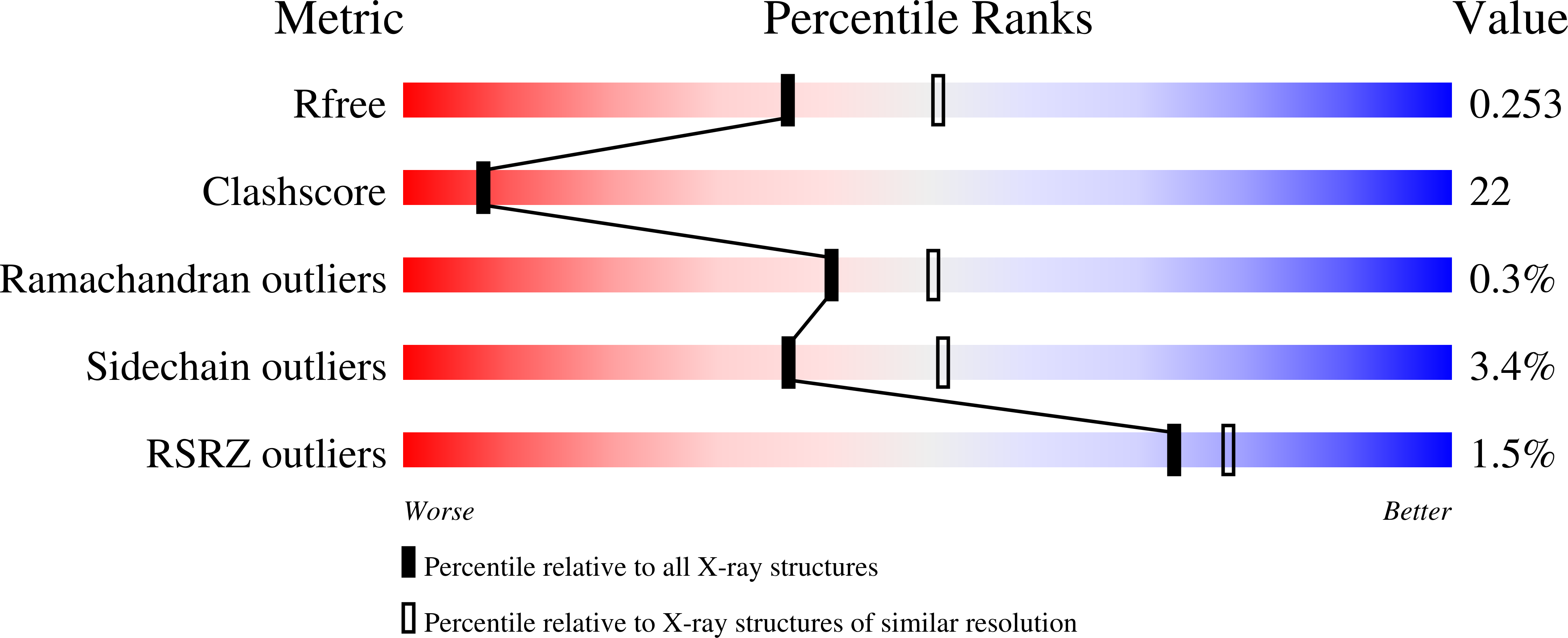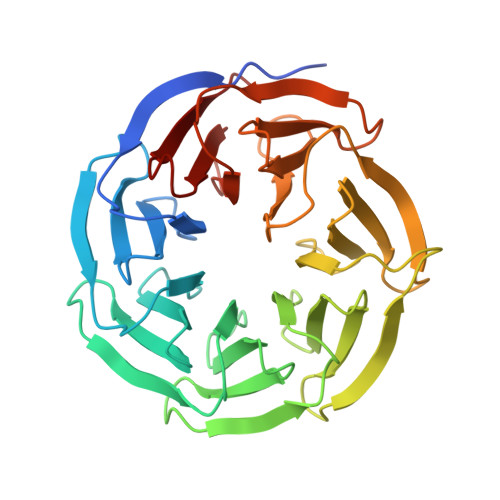Direct mapping of ligandable tyrosines and lysines in cells with chiral sulfonyl fluoride probes.
Chen, Y., Craven, G.B., Kamber, R.A., Cuesta, A., Zhersh, S., Moroz, Y.S., Bassik, M.C., Taunton, J.(2023) Nat Chem 15: 1616-1625
- PubMed: 37460812
- DOI: https://doi.org/10.1038/s41557-023-01281-3
- Primary Citation of Related Structures:
8F93 - PubMed Abstract:
Advances in chemoproteomic technology have revealed covalent interactions between small molecules and protein nucleophiles, primarily cysteine, on a proteome-wide scale. Most chemoproteomic screening approaches are indirect, relying on competition between electrophilic fragments and a minimalist electrophilic probe with inherently limited proteome coverage. Here we develop a chemoproteomic platform for direct electrophile-site identification based on enantiomeric pairs of clickable arylsulfonyl fluoride probes. Using stereoselective site modification as a proxy for ligandability in intact cells, we identify 634 tyrosines and lysines within functionally diverse protein sites, liganded by structurally diverse probes. Among multiple validated sites, we discover a chiral probe that modifies Y228 in the MYC binding site of the epigenetic regulator WDR5, as revealed by a high-resolution crystal structure. A distinct chiral probe stimulates tumour cell phagocytosis by covalently modifying Y387 in the recently discovered immuno-oncology target APMAP. Our work provides a deep resource of ligandable tyrosines and lysines for the development of covalent chemical probes.
Organizational Affiliation:
Department of Cellular and Molecular Pharmacology, University of California, San Francisco, San Francisco, CA, USA.




















